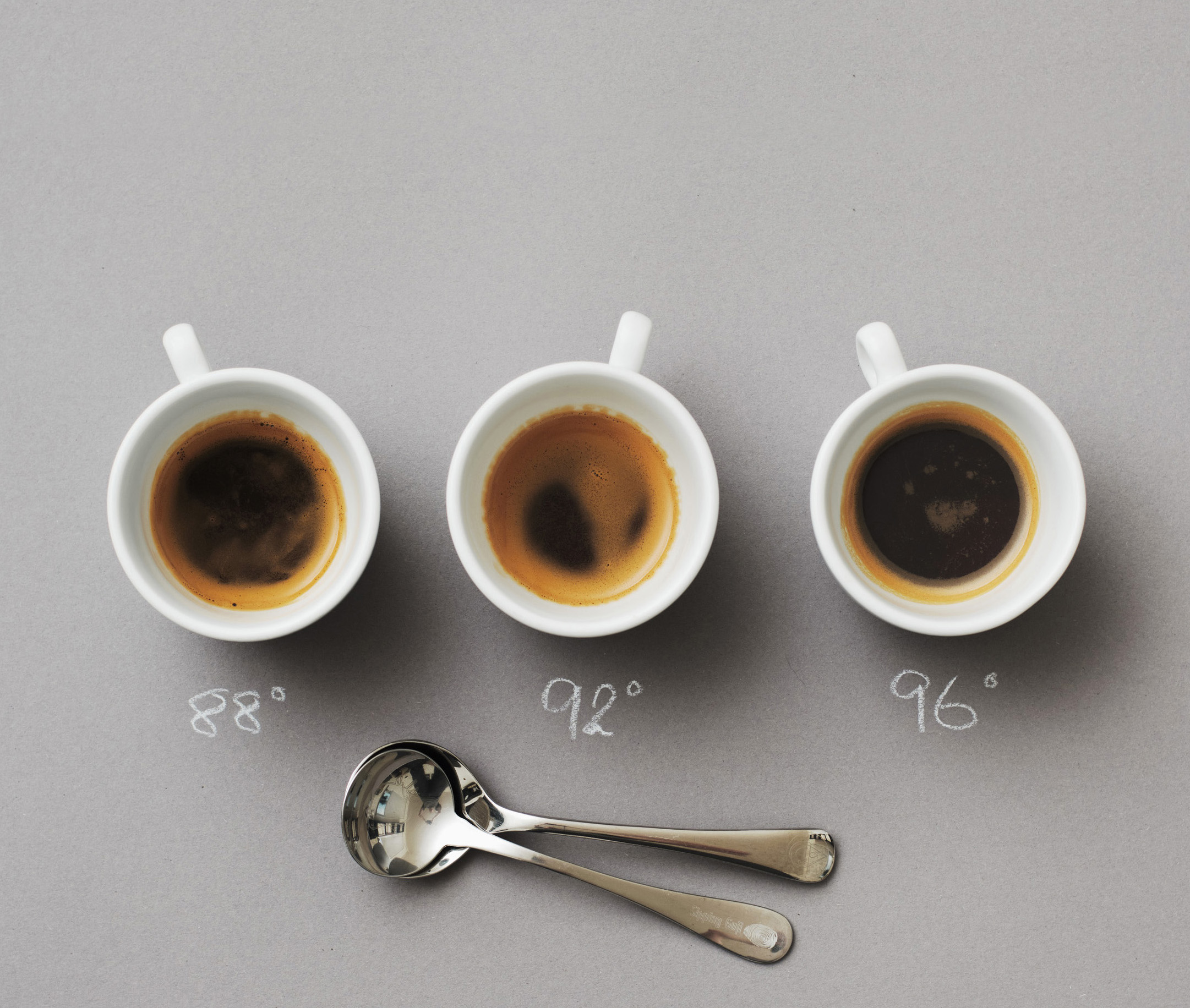One reason extraction doesn’t respond to temperature in the way we would expect could be a changed flow rate. Higher temperatures lead to lower flow rates in espresso (Corrochano et al. 2015), which would change the effect of temperature on extraction.
This effect is probably at least partly due to the effect of gases in the coffee bed. Gases such as CO2 play an important role in espresso extraction, interfering with extraction by creating added المقاومة to the flow of water. Gases are less soluble at higher temperatures, which could result in more bubbles forming, increasing the المقاومة in the bed.
Water also becomes less viscous at higher temperatures — enough to have an effect on espresso وقت تحضير الجرعات (Fekete, 2019). Lower لزوجة also makes the flow less laminar and more turbulent. Increased turbulence could increase the extraction of heavier, less polar molecules, which often carry bitter and astringent flavours.
The Effect on Flavour
While the effect of brew temperature on extraction yield might be small, the effect on flavour can be dramatic. In fact, two espressos that are extracted to exactly 20% at different temperatures will taste quite different. As we learned in Lesson 5.06, the effect of temperature on solubility is quite different for different جزيئات:, less polar جزيئات, which often bring bitter or burnt flavours, are more affected by higher water temperature. The effects of temperature on flow might add to this effect, as we saw above. This means that changing the brew temperature will alter the taste التوازن, even if the total extraction is kept constant.
For example, researchers found a higher concentration of ketones and aldehydes, associated with fresh and fruity flavours, in espresso brewed at 92° C (198° F) than at 88° C (190° F) (S. Anduesa et al., 2003). At 96° C (205° F) and above, they reported an increased concentration of pyrazines,

